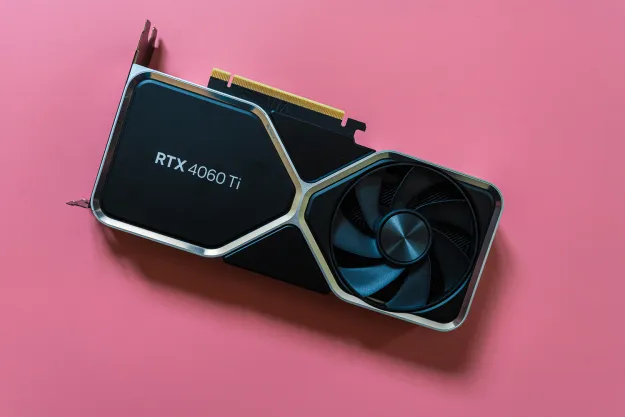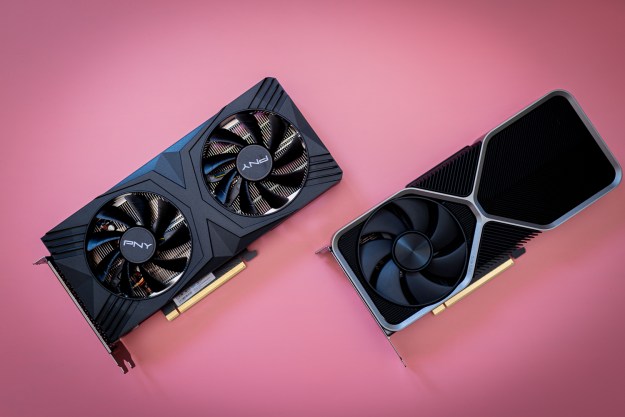
The company’s statement arrives after PC Perspective tried to benchmark four GTX 1080 cards using the 368.19 driver suite. Once the cards were installed and the drivers updated, the site went into the Nvidia’s SLI configuration panel and saw that only two of the four listed cards were enabled for SLI. Knowing that a special key to unlock the other two was on the way, the site emailed Nvidia to find out when it would be available. Nvidia responded it’d nixed the idea.
The deal here is that Nvidia doesn’t recommend setups with more than two Pascal-based cards. The company makes this stance very clear in its GTX 1080 white paper (pdf), stating that the evolution of games has made the process of providing beneficial performance scaling of more than two GPUs increasingly difficult. As an example, Nvidia says that the CPU can get bottlenecked in many games while it struggles to manage more than two graphics cards in the system.
Besides that, the GTX 1080 and GTX 1070 were built to support 2-way SLI anyway. With these chips, the company introduced a new SLI Bridge called SLI HB, capable of running the SLI interface at 650MHz, somewhat faster than the 400MHz seen in legacy SLI bridges. The new SLI subsystem also cranks out double the bandwidth between GPUs when compared to the interface used in older GeForce GPUs. Thus, all this means that gamers will see a smoother experience than prior SLI solutions.
“With the GeForce 10-series we’re investing heavily in 2-way SLI with our new High Bandwidth bridge (which doubles the SLI bandwidth for faster, smoother gaming at ultra-high resolutions and refresh rates) and Nvidia Game Ready Driver SLI profiles,” Nvidia said in an emailed statement. “To ensure the best possible gaming experience on our GeForce 10-series GPUs, we’re focusing our efforts on 2-way SLI only and will continue to include 2-way SLI profiles in our Game Ready Drivers.”
With all that said, developers still have the green light to create games utilizing two or more GPUs, and Nvidia confirmed that it would work with these developers to provide the best experience. Nvidia points out that DirectX 12 and Nvidia VR Works SLI allows developers to “directly implement and control multi-GPU support” in their games, so SLI profiles are not needed.
Support for 3-way and 4-way configurations is now up to each game developer.
In Nvidia’s GTX 1080 white paper, the company explains that DirectX 12 provides new multi-GPU modes: Multi Display Adapter (MDA) mode, and Linked Display Adapter (LDA) mode. These are supported by Nvidia, and Ashes of the Singularity actually uses MDA mode, which allows the game to access each GPU individually on its own without needing the Nvidia driver to handle the load balancing. This mode utilizes any GPU installed in the system, and does not require them to be identical.
As for LDA mode, there are two versions: Implicit and Explicit. This mode requires that the GPUs be similar, and will link each GPU’s memory together to form a large “pool” for the developer. Nvidia’s SLI technology actually uses Implicit LDA mode, meaning that the algorithm control is handled by the SLI interface, while LDA Explicit and MDA modes allow the application itself to handle the algorithm control.
In other words, there’s technically hope for PC gamers who purchase and install more than two Nvidia graphics cards. But support for 3-way and 4-way configurations is now up to each game developer. Games not specifically coded to take advantage of more than two GPUs won’t see a benefit. We may see some graphically demanding games choose to support three or four video cards, but they’re sure to be the exception.
Editors' Recommendations
- Nvidia RTX 50-series graphics cards: news, release date, price, and more
- Nvidia just fixed a major issue with its GPUs
- Nvidia DLSS 3: explaining the AI-driven gaming tech
- Here’s why I’m glad Nvidia might kill its most powerful GPU
- Nvidia’s peace offering isn’t working


